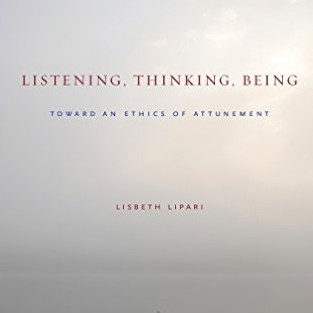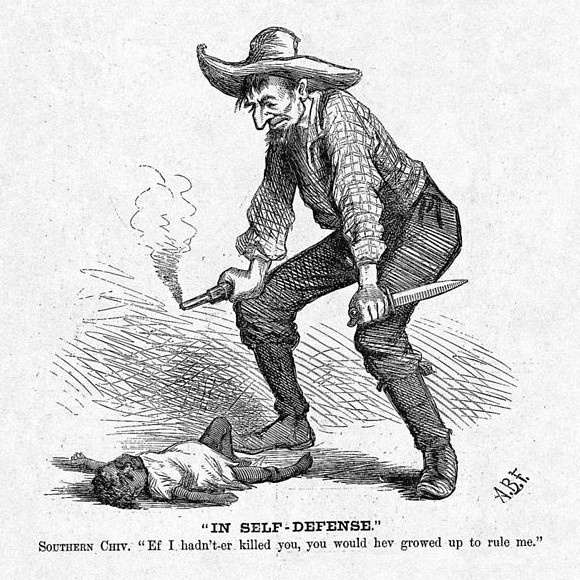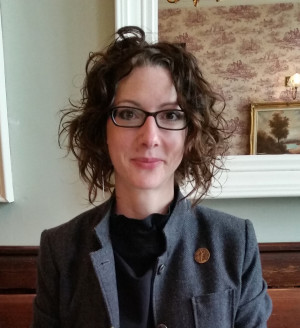Participant Agency and Mixed Methods: Viewing Divergent Data through the Lens of Genre Field Analysis
Introduction
In this article, we use the theoretical lens of Genre Field Analysis (GFA) (Christensen, Cootey, and Moeller; Moeller and Christensen) to show how participant agency is a key factor in producing divergent data (i.e., paradoxes, clashes, and conflicts in patterns of data) in mixed-method research studies. We confront three points of divergent data that emerged in a study we conducted to learn about perspectives of patients in a free healthcare clinic. By viewing our study through GFA, we found that participants employed rhetorical agency to achieve their own goals in answering our questions. They didn’t just play our research game; they made moves of their own.
We show how participant responses that we originally thought to be divergent actually demonstrated participants’ agency across different research spaces via the research genres we employed. GFA “affords researchers micro and macro views of genres at work, the human agents who work with them, and the structures they operate within by blending analytic components from genre theory and play theory” (Moeller and Christensen 70). Viewed through the GFA lens, we see that patients have complex goals that influence the perspectives they share through research participation, and, to better understand these perspectives, researchers must be attuned to participants’ enactment of rhetorical agency. The purpose of this article is to demonstrate the value of GFA for recognizing the role of participants’ agency in mixed-method studies that produce divergent data.
How our Mixed-Methods Study Resulted in Divergent Data
Health communication is a burgeoning focus of technical communication research, with a sizable body of literature investigating how to improve health literacy for minority and low-income populations (e.g., Antón et al.; Germaine; Mein et al.; Thatcher). Prompted by the belief that health literacy efforts should be driven by the experiences and priorities of these patients, we partnered with a free healthcare clinic to conduct an IRB-approved (IRB #4353), two-phase research study: 1) a qualitative pilot study of patient perspectives,1 which informed the design of 2) a patient survey.
Low-income and minority patients tend to face a wide range of challenges that affect the quality of their healthcare, and studies have shown that doctor-patient trust, healthcare communication, and adherence to prescribed treatment plans all tend to be lower among these patients than for the population at large (Schoenthaler et al. 186; Vourlekis and Ell 162). Understanding patient perspectives and experiences is an important step in working together to mitigate these challenges.
To explore patient perspectives, we first conducted semi-structured interviews of approximately one hour with eleven participants who had received healthcare at the clinic within the last six months. Interview topics included participants’ sources of health information; where they seek healthcare; and their thoughts and feelings as they arrive at the clinic, wait to see a doctor, converse with a doctor, and leave the clinic. Participants were recruited at the clinic, but interviews took place at a later date in a location of their choice. Interviews were audio recorded and the transcripts analyzed for common themes.
We used the themes that emerged from the interview data to inform the multiple-choice selections on a patient satisfaction survey that the clinic coordinator asked us to design and conduct. We distributed the one-page, paper survey in the clinic waiting room two evenings per week for four weeks (every time the clinic was open), and 129 patients filled out the survey as they awaited care. We informed patients that patterns of survey results would be shared with multiple audiences, including funding organizations whose grants supported the clinic.
The first point of divergent data arose from the question, “Where do you get health information?” Interview data indicated that patients were more likely to acquire information by asking family, friends, and healthcare providers not at the clinic and by searching the Internet than by asking healthcare providers at the clinic. In contrast, more than half of survey respondents indicated that they acquired health information by asking healthcare professionals at the clinic, making the clinic the most common health information source among survey respondents.
The second point of divergent data regarded what people often do when they leave the clinic. In response to the survey question, “After seeing the doctor, what will you probably do?” 93% of respondents selected the option, “Follow the doctor’s instructions,” and no one selected the option, “Forget the doctor’s instructions.” There were substantially different patterns of responses in the interview data. Although most of the interview participants stated that they try to follow the doctor’s instructions, 5 of the 11 interview participants mentioned that they often forget those instructions. We believe that this example of divergence relates to the implied intentionality in the survey question in contrast to the broader range of discussion allowed for by the semi-structured interview methods. Our study is an example of what Fetters, Curry, and Cresswell describe as an exploratory sequential design: a mixed methods study in which qualitative data is collected and analyzed to inform the design of a quantitative data collection instrument such as a survey (2136). In other words, patterns of responses from the exploratory interviews directly informed the survey answer selections: an approach that presumably increases validity by allowing participants’ voices to shape the design of research instruments. In retrospect, however, we can see how unlikely it would be for survey participants to select the answer “Forget the doctor’s instructions” because there is an implied intentionality in the question, “After seeing the doctor, what will you probably do?” As this example indicates, following best practices in mixed methods research design has the potential to increase the likelihood of collecting divergent data when the communication constraints of methods dramatically differ.
The third point of divergent data emerged regarding satisfaction with check-in procedures. On the survey, respondents rated their satisfaction with the clinic’s location, appearance, hours, check-in procedures, and medical care on a 4-item ordinal scale ranging from very satisfied to very unsatisfied. Regarding check-in procedures, 98% of the patients were either satisfied or very satisfied; only 2% indicated that they were unsatisfied, and no one selected “very unsatisfied.” However, patterns of interview data diverged from patterns of survey data: 8 of the 11 interview participants described in rich detail their unsatisfactory experiences with the clinic’s check-in process. Without an understanding of the rhetorical context informed by GFA, we may have misinterpreted this divergence, overlooking or misunderstanding how marginalized groups, minority and low-income patients, were enacting their own power through selecting aspects of their perspectives to share.
Understanding Divergence in Mixed-Method Studies
We found divergent data when we mixed research methods. We initially conducted what Creswell called a mixed-methods approach, looking for ways to converge data from interviews and surveys (206). Greene (Mixed Methods) discusses the five purposes for mixing methods, including triangulation and complementarity. Triangulation “seeks convergence, corroboration, or correspondence of results from multiple methods” (100). Complementarity seeks “broader, deeper, and more comprehensive social understandings by using methods that tap into different facets or dimensions of the same complex phenomenon” (101).
In our study, the interviews informed the development of the survey instrument, with which we hoped to collect data that led to triangulation and complementarity with our interview data. When we compared patterns of data from both research methods, however, we found what we thought to be conflicting data. Compared to interview participants, survey respondents were more likely to identify the clinic in their health information networks and were less likely to identify friends and family as health information sources. Interview participants revealed that they often forgot the physician’s instructions, and they were more likely than survey respondents to express dissatisfaction with the check-in procedures at the clinic.
Confronting the issue of how to manage divergent data, scholars (Greene, “The Generative Potential” 208; Greene, Mixed Methods 22; Jang et al. 223; Slonim-Nevo and Nevo 110) have begun to embrace divergence and dissonance with equal regard as convergence and consonance: “mixed methods inquiry can generate puzzles and paradoxes, clashes and conflicts that, when pursued, can engender new perspectives and understandings, insights not previously imagined, knowledge with originality and artistry” (Mixed Methods 24). As Slonim-Nevo and Nevo point out, convergence or “a consistent integration of findings from diverse methods is not easy to come by” (110). They then ask what should be done when findings from one method diverge from findings from another. In the next section, we use GFA to reveal how participants enact agency in selecting which aspects of their perspectives to share.
Using GFA to Reveal Participants’ Agency
Research strategies and their corresponding methods create contexts that shape not only the manner in which the researcher approaches the research situation but also the manner in which the participant engages. Mixed-method strategies create multiple research contexts, which commonly result in initiation and expansion (Greene, Mixed Methods 102-103). In other words, mixed-method strategies employ multiple genres as methods that afford and constrain interactions between researchers and participants and affect how participants enact their agency in terms of the data they choose to share and how they share it.
Current understandings of genre stems from Miller who argued, “[A]n understanding of genre can help account for the way we encounter, interpret, react to, and create particular texts” (151). A genre is best understood as a “typified rhetorical action,” and genre studies are focused “not on the substance or the form of discourse but on the action it is used to accomplish” (151). More recent studies shed even more light on ways to think about genres and their rhetorical actions within communities. Luzon stated,
Genres are studied as objects that mediate socially organized activities. They are tools to carry out community activities and to negotiate meaning within the community. Thus, when studying the different forms of communication of a community, researchers need to analyze them in relation to the community’s recurrent activities, its organization, and its members’ shared knowledge. (288)
We see that studying genres can help scholars better understand a community’s or organization’s activities and relationships among its participants. Scholars have developed various theories for describing the functions of genres within organizations: for example, genre sets (Devitt), genre systems (Bazerman; Russell), genre repertoires (Orlikowski and Yates), and genre ecologies (Spinuzzi and Zachry). Utilizing play theory and genre ecologies, Christensen, Cootey, and Moeller introduced GFA as a method for better understanding social structures and explaining the meditational influence that genres play in game and software design teams. Moeller and Christensen also used it to better understand the processes and relationships critical to academic research proposal writing.
We used GFA to better understand why our mixed methods study revealed divergent data. There are four primary elements of genre field analysis:
1. Genre fields are the social space in which a genre exerts influence.
2. Transformative locales are the specific interactions in which humans and genres influence one another.
3. Player- and genre-agents are the names given to the interactants in a transformative locale.
4. Play scenarios are the rhetorical moves that player-agents and genre-agents make when they influence one another. (Christensen, Cootey, and Moeller 2)
Our mixed-method study constituted a genre field made up of two transformative locales, or the social spaces in which we conducted the studies. Interviews (genre-agents) were conducted at locations of the participants’ (player-agents) choosing, most commonly their homes. The survey (another genre-agent) was conducted in the waiting room of the clinic. When we considered the research sites as transformative locales, we immediately saw how they may have influenced participant responses.
Interviews took place in personal or social spaces, affording participants some distance from the clinic and facilitating more open, critical answers regarding what role the clinic plays in their healthcare information networks, what they do with the information they receive at the clinic, and their critiques of the check-in procedures. Survey respondents were in the process of seeking medical care, and they may have viewed the survey as a genre-agent that could influence decision-makers to keep the clinic open. Predictably, then, respondents indicated that the clinic played an influential role in their healthcare information networks and that they were satisfied with their experience at the clinic. In other words, what at first had appeared to be confusingly, unaccountably divergent data, instead—when viewed through the lens of GFA—were recognized as enactments of participant agency.
GFA accedes that both humans and genres “can and do possess demonstrable agency” (Christensen, Cootey, and Moeller 2). In applying this perspective, we began to view ourselves and our research participants as player-agents who interacted with and were influenced by the transformative locales and genre-agents: the research settings and the research methods. As Christensen, Cootey, and Moeller argue, “A genre field denotes the entire spectrum of space surrounding a genre artifact or artifacts. It includes the agents, influences, social structures, and constraints that are productive of genres and the relationships that are influenced by genre” (2). Our mixed-method research context was a social space in which genres were enacted and negotiated.
According to GFA, play scenarios describe ways that players interact with, influence, and are influenced by other players and genre-agents. For example, the genre-agent of interviews afforded an hour of private, direct communication between researchers and participants, which shaped how participants enacted their agency (play scenarios): presumably ascribing to a shared goal of generating an understanding of patient experience because patients chose to share in-depth, complex pictures of their experience, often taking the lead in the conversation to direct it toward issues they felt were key to this experience.
As player-agents, participants demonstrated “rhetorical literacy” (Cargile Cook 10) by “reading” the transformative locales and genre-agents and engaging in play scenarios (responses) that were suited to the rhetorical outcomes they desired. For example, they embraced the critical distance afforded them by the interview locales to critique the clinic, and they recognized the potentially detrimental effects that their critiques might have on the free clinic when responding in the survey locale.
Conclusion
We uncovered rhetorical influences that facilitated participants as player-agents whose play scenarios produced divergent research responses. When framing our study using GFA, we could see how participant responses were not conflicting as much as they were aimed at different results: they enacted agency in the transformative locale of the interview to help us make the clinic a better fit with their existing healthcare information networks, and they enacted agency in the transformative locale of the survey to respond in ways that could help to keep the clinic open.
Player-agents engage with and within genre fields to strengthen or modify social structures and to establish their own positions within those structures (Christensen, Cootey, and Moeller 2). By uncovering the rhetorical influences on participant (player-agent) responses in the context of our mixed-method study, we were able to understand not only how the participants positioned themselves within and against the social structures of the genre field but also why their positioning or responses to the genre-agents resulted in developmental and expansive (i.e., divergent) results.
The insights afforded by GFA matter—especially for research that is designed to create spaces in which to listen to marginalized people’s perspectives. When researchers explicitly consider the factors that can affect participants’ agency (factors named as considerations of GFA), researchers may better understand the implications of the data they collect and—even more importantly—may create better spaces for listening through their research design. Without GFA, researchers may fail to recognize when and how participants are enacting agency and the effects of this enactment on what data they choose to share.
We advocate for GFA as a useful planning tool for the research design process, helping scholars to identify and reflect upon a wide range of factors that affect the data collected as participants enact their agency. GFA can provide a structure for considerations of participant agency—prompting researchers to explicitly consider roles and effects of genre-agents such as data collection methods and transformative locales such as recruiting and data collection sites early in the research-design process and to be attuned to play scenarios such as what information and perspectives participants (player-agents) choose to share and what those choices suggest about participants’ goals and enactment of rhetorical agency.
Endnotes
- For details about the research design and methods of the qualitative pilot study, see Price, Walton, and Petersen. return
Works Cited
- Antón, Marta, et al. “An Intercultural Analysis of Sources of Medical Information in Spanish-Speaking Diabetes Patients.” Rhetoric, Professional Communication, and Globalization 3.1 (2012): 140–61. Print.
- Bazerman, Charles. “Systems of Genres and the Enactments of Social Intentions.” Genre and the New Rhetoric. Ed. A. Freedman and P. Medway. London: Taylor and Francis, 1994. 79–99. Print.
- Cargile Cook, Kelli. “Layered Literacies: A Theoretical Frame for Technical Communication Pedagogy.” Technical Communication Quarterly 11.1 (2002): 5–29. Print.
- Christensen, David M., Jason L. Cootey, and Ryan M. Moeller. “Playing in Genre Fields: A Play Theory Perspective on Genre.” Proceedings of the 25th Annual ACM International Conference on Design of Communication. ACM, (2007): 1–8. Print.
- Creswell, John W. Research Design: Qualitative, Quantitative, and Mixed Method Approaches. Thousand Oaks, CA: SAGE Publications, Inc., 2009. Print.
- Devitt, Amy J. “Generalizing about Genre: New Conceptions of an Old Concept.” College Composition and Communication 44.4 (1993): 573–86. Print.
- Fetters, Michael D., Leslie A. Curry, and John W. Creswell. “Achieving Integration in Mixed Methods Designs—Principles and Practices.” Health Services Research 48.6pt2 (2013): 2134–56. Print.
- Germaine, Nicole St. “The Hispanic Social Media Revolution: Spanish-Language Healthcare Pages on Facebook Introduction.” Rhetoric, Professional Communication, and Globalization 3.1 (2012): 36–57. Print.
- Greene, Jennifer C. “The Generative Potential of Mixed Methods Inquiry.” International Journal of Research and Method in Education 28.2 (2005): 207–11. Print.
- —. Mixed Methods in Social Inquiry. San Francisco, CA: Jossey-Bass, 2007. Print.
- Jang, Eunice E. et al. “Integrative Mixed Methods Data Analytic Strategies in Research on School Success in Challenging Circumstances.” Journal of Mixed Methods Research 2.3 (2008): 221–47. Print.
- Luzon, M.J. “Genre Analysis in Technical Communication.” IEEE Transactions on Professional Communication 48.3 (2005): 285–95. Print.
- Mein, Erika, et al. “Incorporating Digital Health Literacy into Adult ESL Education on the US-Mexico Border.” Rhetoric, Professional Communication, and Globalization 3.1 (2012): 162–74. Print.
- Miller, Carolyn R. “Genre as Social Action.” Quarterly Journal of Speech 70.2 (1984): 151–67. Print.
- Moeller, Ryan M., and David M. Christensen. “System Mapping: A Genre Field Analysis of the National Science Foundation’s Grant Proposal and Funding Process.” Technical Communication Quarterly 19.1 (2009): 69–89. Print.
- Orlikowski, Wanda J., and JoAnne Yates. “Genre Repertoire: The Structuring of Communicative Practices in Organizations.” Administrative Science Quarterly 39.4 (1994): 541-74. Print.
- Price, Ryan James, Rebecca Walton, and Matthew Petersen. “Methodological Journey: Lessons Learned from a Student-Led Intercultural Pilot Study.” Rhetoric, Professional Communication, and Globalization 5.1 (2014): 90–107. Print.
- Russell, David R. “Rethinking Genre in School and Society: An Activity Theory Analysis.” Written Communication 14.4 (1997): 504–54. Print.
- Schoenthaler, Antoinette et al. “Provider Communication Effects Medication Adherence in Hypertensive African Americans.” Patient Education and Counseling 75.2 (2009): 185–91. Print.
- Slonim-Nevo, Vered, and Isaac Nevo. “Conflicting Findings in Mixed Methods Research An Illustration From an Israeli Study on Immigration.” Journal of Mixed Methods Research 3.2 (2009): 109–28. Print.
- Spinuzzi, Clay, and Mark Zachry. “Genre Ecologies: An Open-System Approach to Understanding and Constructing Documentation.” ACM Journal of Computing Documentation 24.3 (2000): 169–81. Print.
- Thatcher, Barry. “Fotonovelas and Anglo Designs in Health Communications for Spanish-Speaking Residents along the U.S.-Mexico Border.” Rhetoric, Professional Communication, and Globalization 3.1 (2012): 74–109. Print.
- Vourlekis, Betsy, and Kathleen Ell. “Best Practice Case Management for Improved Medical Adherence.” Social Work in Health Care 44.3 (2007): 161–77. Print.
Cover Image Credit: https://www.flickr.com/photos/mikemac29/16235001177/




 Ryan M. Moeller is an Associate Professor in the Department of English at Utah State University. His book, Computer Games and Technical Communication (co-edited with Jennifer deWinter), demonstrates the intersection of his teaching and research interests. His research is focused on how emergent technologies affect human agency, especially within the consumer electronics and computer gaming industries. His work has appeared in Technical Communication Quarterly, Kairos, fibreculture, Game Studies, Computers and Composition Online, Programmatic Perspectives, Works and Days, and in edited collections.
Ryan M. Moeller is an Associate Professor in the Department of English at Utah State University. His book, Computer Games and Technical Communication (co-edited with Jennifer deWinter), demonstrates the intersection of his teaching and research interests. His research is focused on how emergent technologies affect human agency, especially within the consumer electronics and computer gaming industries. His work has appeared in Technical Communication Quarterly, Kairos, fibreculture, Game Studies, Computers and Composition Online, Programmatic Perspectives, Works and Days, and in edited collections.  Rebecca Walton is an Assistant Professor at Utah State University. Her research interests in technical and professional communication include social justice, human dignity and human rights, and qualitative methods for cross-cultural research. Her work has appeared in Technical Communication Quarterly; Journal of Business and Technical Communication; and Information Technologies and International Development, as well as other journals and edited collections.
Rebecca Walton is an Assistant Professor at Utah State University. Her research interests in technical and professional communication include social justice, human dignity and human rights, and qualitative methods for cross-cultural research. Her work has appeared in Technical Communication Quarterly; Journal of Business and Technical Communication; and Information Technologies and International Development, as well as other journals and edited collections.  Ryan Price is a PhD student in the Theory and Practice of Professional Communication at Utah State University. His research interests center on medical rhetoric: specifically, stakeholders’ perceptions of charity healthcare environments and healthcare communication with and by low-income patients.
Ryan Price is a PhD student in the Theory and Practice of Professional Communication at Utah State University. His research interests center on medical rhetoric: specifically, stakeholders’ perceptions of charity healthcare environments and healthcare communication with and by low-income patients.